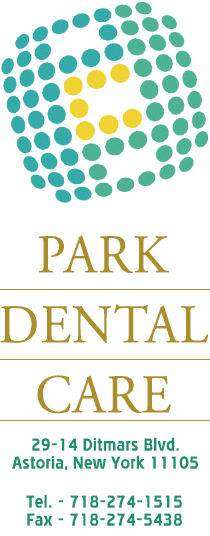If you have a tooth that is badly decayed, cracked or broken, your dentist may have recommended that you get a dental crown. This dental treatment is one of the most common treatments performed, following the filling of cavities. The procedure entails two visits – after the first visit you will walk out of the office with a temporary crown while the permanent one is being created from the molds taken during the visit. Once you leave after the second visit, the permanent restoration will be affixed in your mouth.
Dental Crowns Permanent Restoration
Care instructions for dental crowns vary slightly depending on whether you have a temporary or permanent one in your mouth. Since temporary crowns, as the name implies, are only designed to remain in your mouth temporarily, these require slightly more care when eating, chewing and flossing to ensure that you don’t dislodge them. Once the permanent restoration is affixed, it functions pretty much like any natural tooth in your mouth and care instructions are virtually the same after a short initial period.
For starters, let’s go over what you should do when you walk out of the office after your first visit with a temporary. Your gums and the tooth that holds the crown, as well as surrounding teeth may be a bit sore or tender right after your procedure due to the work that was performed, so you may initially want to stick to a diet of softer foods until you feel more comfortable. How long it takes to transition to harder foods is up to you and should be dependent on how you feel when you bite down on your new temporary tooth, but it shouldn’t take too long.
Even once you can withstand more pressure on the new temporary restoration, you should avoid chewing anything that is too hard or crunchy in the area of the restoration. This is because the temporary is not as hard and strong as the permanent replacement tooth will be and therefore may break or crack under intense chewing forces. Chewing these foods can also cause the temporary to come off. The same goes for sticky foods, which should not be eaten at all while the temporary is in your mouth to avoid the food sticking to the tooth and pulling it out.
Once the permanent dental crown is affixed, it should be able to withstand the same forces that a natural tooth can. You should wait about 24 hours or so, however, before eating anything sticky, crunchy or hard on the side of the mouth where your new restoration is so that the cement can properly set. You may also find that your gums around the tooth are still a bit sensitive and if so, chew on the other side of your mouth or avoid foods that are too hard while the gum heals. Following this short period, you can eat and drink in the same way as you did with your natural tooth.
When it comes to oral hygiene, you should brush and floss just as you did with your natural tooth when you have a permanent dental crown. The only change to your routine while a temporary is in is that during flossing, you should slide the dental floss out rather than lifting it up, because it can dislodge the temporary. Otherwise, regular brushing, flossing and preventative care appointments at the dentist should keep your new tooth healthy and in good condition.
For more information about dental crowns or to schedule an appointment with one of our dentists at Park Dental Care in Queens, call 718-274-1515.







